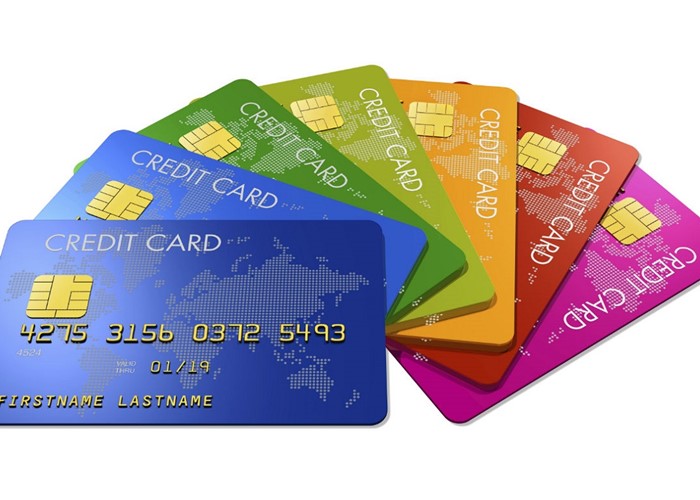Best all-round credit card!

This brand new credit card offers a fantastic 0% deal which won't deviously rack up your interest bill like most other cards.
It’s a sad fact many credit card providers have a nasty habit of wheedling extra money out of you, often without you even realising it’s happening.
One trick which immediately springs to mind is ‘negative order of payment’. If you’re not familiar with this term, watch our Don’t get caught out by negative order of payment video.
Rachel Robson explains how negative order of payment works and how to avoid it.
If you need to use a credit card for both a balance transfer and spending, you should watch out. Here’s why: Negative order of payment refers to the way in which different sources of debt on your card are repaid. Most credit card providers will repay your least expensive debts first, leaving more expensive debts on the card for longer to rack up a lot more interest.
How might this sting you in practice? Let’s say you have a credit card which offers a 0% deal for 12 months on balance transfers, and a 0% deal on purchases for three months. After three months your purchases will be charged at the typical APR of 15.9%.
This means you’ll enjoy interest-free credit for the first three months. After this period, all your card repayments will be used to chip away at the original debt you transferred over, which is still interest-free. Meanwhile, you'll be charged that hefty 15.9% rate of interest on all your new debts. You won’t even begin to clear any purchases you make on the card - which are now being charged at 15.9% - until your balance transfer has been completely paid off first.
Many credit card holders have fallen foul of negative order of payment - and suffered far higher interest charges than they were expecting - simply because they don’t know how it works. So, how can you stop that from happening to you?
Three ways to avoid negative order of payment
1. Only use a credit card for one purpose only - You could use one card for your balance transfer, and a second card for spending. In this way, because the different types of debt are separated, negative order of payment won’t come into play. On the downside, you’ll have the hassle of applying - and being accepted - for two cards in the place of one. This could increase the total amount of credit potentially available to you, which might have a negative effect on your credit score if this figure is deemed too high.
Recent question on this topic
- Cheshire Swift asks:
Does taking out a credit card and never using it affect your credit rating?
- MikeGG1 answered "Getting another card does not affect your credit rating. Repeated attempts does. However,..."
- Cheshire Swift answered "So to confirm, if I were to do this, you'd suggest I took out the card (with cashback), then wrote..."
- Read more answers
2. Choose a card which operates positive order of payments instead - Some credit cards actually operate positive order of payments, which means the most expensive debts are repaid ahead of cheaper debts. Sounds like a great idea in theory, but in practice very few cards work in this more favourable way - namely, just Nationwide, Saga and the Co-op. And, right now, these card providers don’t offer market-leading interest-free deals.
3. Alternatively, choose a single card with the same 0% period on balance transfers and purchases - In this way, there won’t be a cheaper or more expensive debt. Both types of debt will be charged at exactly the same rates until you clear them, so you won't have to worry about negative order of payment. I think this third option is the best way to beat negative order of payment.
Which card should I choose to beat negative order of payment?
The Sainsbury’s Finance Nectar Card Credit Card is an excellent choice here. For one thing it offers the longest 0% deal on purchases making it a cracking flexible friend for spenders. But it's only available to Nectar Card holders. If you aren’t already a member of the Nectar loyalty scheme, you can easily sign up to qualify for the credit card.
You can apply for a Nectar Card at Sainsbury’s, BP, Homebase or Gala Bingo. Alternatively, you can sign up online.
Once you’ve got your Nectar Card number, and the Sainsbury’s Finance Nectar Card Credit Card, you’ll enjoy a 0% introductory period on both balance transfers and purchases for a whole year. This is the most generous interest-free dual deal on the market right now.
Donna Werbner reviews the pros and cons of the Sainsbury's credit card
Note you must have used your Nectar Card at least once in the last six months to be eligible for the deal. Sainsbury’s may verify this by checking your Nectar account.
But is there a downside to this fantastic deal? First of all, you’ll have to pay a 3% transfer fee to move your existing balance onto the card. But this is a fairly standard charge.
Secondly, you should only go for the Sainsbury’s Finance Nectar Card Credit Card if you intend to use it for both balance transfers and spending. If you’re only looking to move your balance, there are longer 0% deals available. For example, the Santander Credit Card offers a 15-month interest-free period. And if you bank at HSBC, NatWest, RBS or First Direct, you may also qualify for a 15-month deal specifically for existing current account customers. Meanwhile, the Virgin Credit Card is just a whisker behind with 14 months.
Related how-to guide

Pay off your credit card debts
How to destroy your credit card debt quickly and effectively.
See the guide
Any other contenders?
Related how-to guide

Pay off your credit card debts
How to destroy your credit card debt quickly and effectively.
See the guideAs well as the Sainsbury’s Finance Nectar Card Credit Card, Virgin also offers an equally generous 0% year-long deal on balance transfers and spending. And the transfer fee is a smidge lower at 2.98%. But the Sainsbury’s card is still my top choice.
This is because the standard 15.9% APR - which kicks in once the introductory period is over - is lower than Virgin’s at a relatively high 18.9%. (Although I would of course suggest moving your balance again to avoid paying interest at the standard APR.)
On top of that, those who have already taken advantage of Virgin’s ever popular balance transfer deal won’t be able to move their remaining debt onto another Virgin card. So this leaves Sainsbury’s Finance Nectar Card Credit Card as the best all-round credit card.
Compare credit cards at lovemoney.com
More: The UK’s nastiest credit card tricks | Don’t use your credit card to do this!
Most Recent
Comments
Be the first to comment
Do you want to comment on this article? You need to be signed in for this feature








